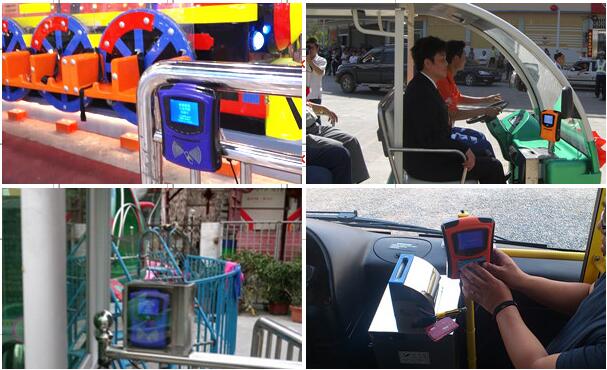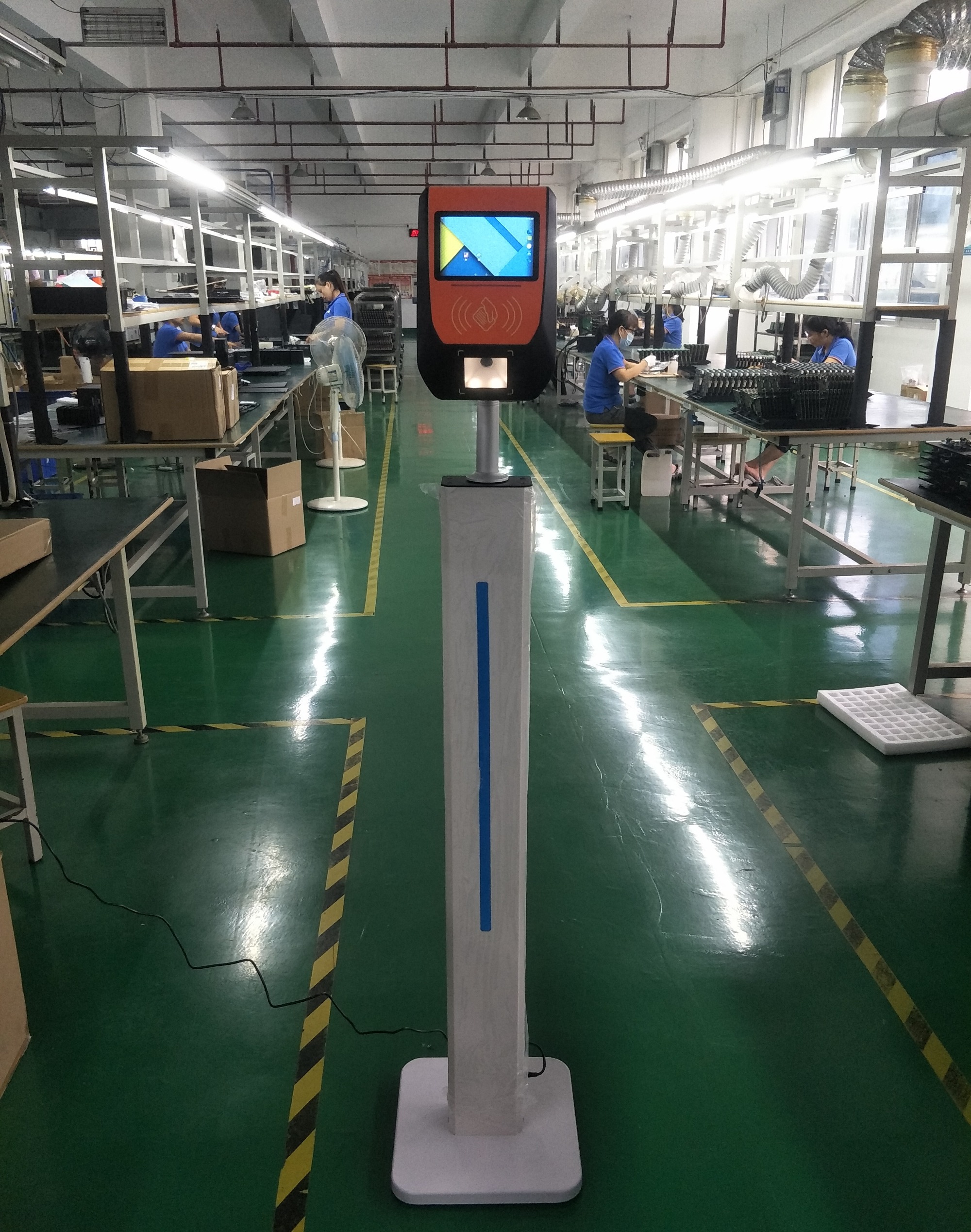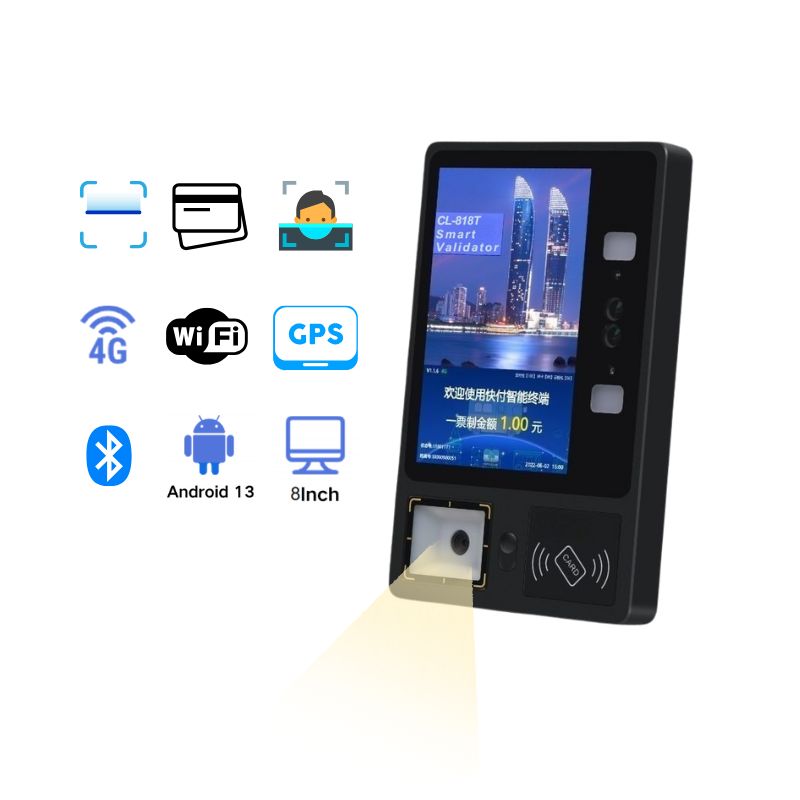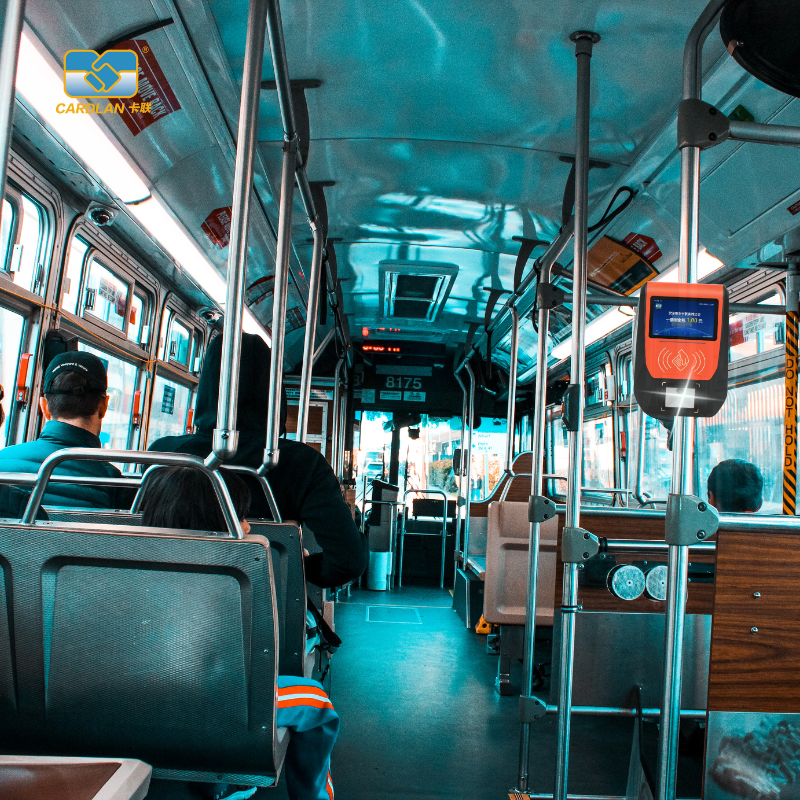The following is a detailed introduction to the shuttle bus fare system:
1、 System composition
The bus fare system mainly consists of the following parts:
Smart card (ride card): usually uses an RF CPU card, equipped with a microprocessor, memory, control logic, algorithm unit, and RF transceiver circuit. These cards can store passengers' personal information and travel records, and support fast identity recognition and fee deduction.
Passenger service equipment:
Radio frequency card reader: installed at the entrance or exit of stations or vehicles, used to read ride cards, deduct fees from ride cards, and control the opening and closing of revolving doors.
Add money machine: used to add money to the ride card, supporting multiple payment methods such as cash and credit card.
Ticket office equipment: provides comprehensive services such as card issuance, refunds, and additional payments.
Card analysis and reading equipment: used for card verification, fee adjustment, and information transmission.
Station Management System: A computer information management system located at each main station, responsible for station operation and schedule control, station level report management, station level revenue and operation monitoring, equipment monitoring, collection and distribution of fare tables, and collection and distribution of blacklists.
Wireless communication module 4G, wifi: Some advanced bus fare systems use wireless data collection methods to complete the data transmission process through wireless base stations and receivers, achieving real-time data updates and remote management.
2、 System functions
Identity recognition and fee deduction: The system quickly identifies the passenger's identity by reading the information on the ride card, and automatically deducts the corresponding fees according to the set charging standards.
Data management: The system is capable of real-time recording of passengers' travel records, expense deductions, and other information, and generating various reports for management personnel to analyze and query.
Blacklist management: The system has the ability to retrieve blacklists, which can timely discover and lock blacklisted cards, ensuring the security and accuracy of fee management.
Equipment monitoring and self inspection: The system equipment has automatic detection function, which can detect key components, automatically alarm when faults are found, and facilitate timely maintenance and handling.
Intelligent management: Some advanced systems also have advanced technologies such as facial recognition and NFC to achieve contactless payment and automatic recognition management, improving travel efficiency and user experience.

3、 Application prospects
With the acceleration of urbanization and the increasing demand for diversified modes of transportation, the application of bus fare systems in enterprise and public transportation buses is becoming more and more widespread. In the future, with the development of smart transportation, the bus fare system will become more intelligent, diversified, data-driven, personalized, and multi scenario, providing users and enterprises with better travel services and management experiences. For example, the system can optimize routes and schedule trips based on users' travel habits and needs, providing more personalized services; At the same time, through big data analysis and management, provide data support for the use of shuttle buses for enterprises, and improve management efficiency.


 Cardlan provides payment terminals for you!
Cardlan provides payment terminals for you!
 Code Scanning and Recognition Machine for Enterprise Bus (Swipe IC Card + Scan QR Code)
Code Scanning and Recognition Machine for Enterprise Bus (Swipe IC Card + Scan QR Code)
 Cardlan complete system and hardward provider
Cardlan complete system and hardward provider
 Cardlan flat fare/Zonal fare collection solution
Cardlan flat fare/Zonal fare collection solution